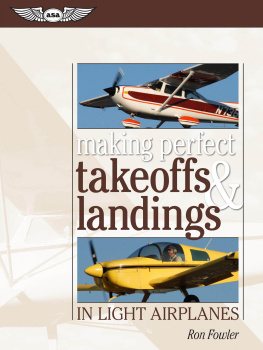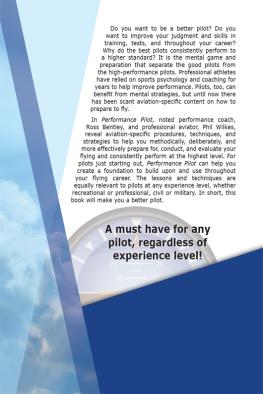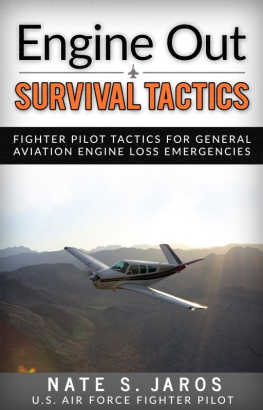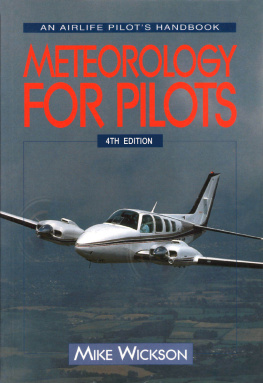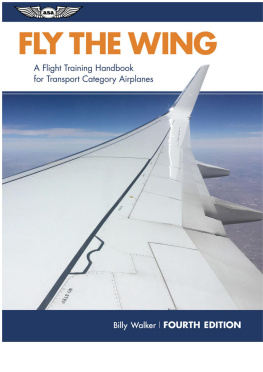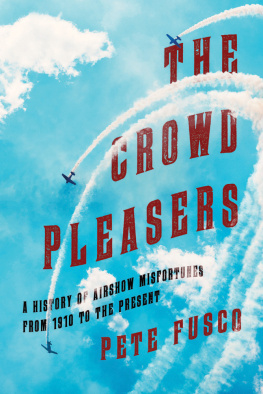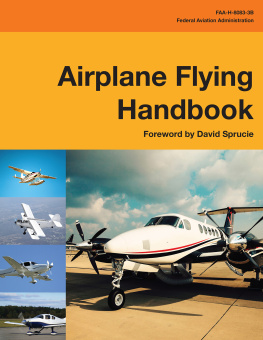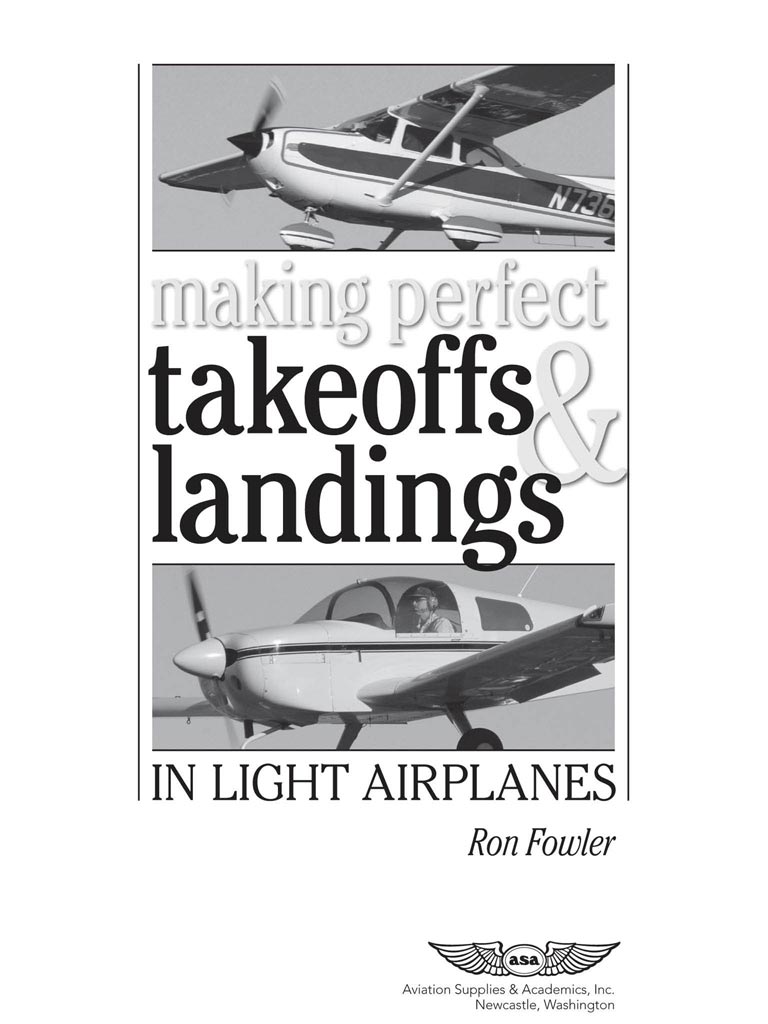Making Perfect Takeoffs and Landings in Light Airplanes
Ron Fowler
Aviation Supplies & Academics, Inc.
7005 132nd Place SE
Newcastle, Washington 98059-3153
asa@asa2fly.com | www.asa2fly.com
2013 Aviation Supplies & Academics, Inc.
All rights reserved. Making Perfect Landings first edition published in 1984 by Iowa State University Press; sixth printing 2006 Aviation Supplies & Academics, Inc. Making Perfect Takeoffs first edition published 1991 by Iowa State University Press. Combined Edition published 2013 by Aviation Supplies & Academics, Inc.
The excerpt from Ernest K. Gann, Fate Is the Hunter, Simon and Schuster, 1961, is reprinted with permission from Simon and Schuster. The excerpt from Richard Bach, A Gift of Wings, Delacorte Press, 1974, is reprinted with permission from Richard Bach. The excerpt from Beryl Markham, West with the Night, North Point Press, 1983, copyright 1984 by Beryl Markham, is reprinted with permission from North Point Press.
Photography credits
Cover photos are courtesy of Henry Geijsbeek. Photos on the following pages (page numbers refer to print edition) are courtesy of: pp.10, 17, 23, 26, 28, 131, 167, 216, Henry Geijsbeek; pp.64, 105, 147, 188, 220, John Tate; pp.103-104, Cessna Aircraft Company; p.106 (top), Piper Aircraft Corporation; p.106 (bottom), Maule Aircraft Company; p.107, Experimental Aircraft Association, Inc.
ASA-PERF-TOL-EB
Print Book ISBN 978-1-61954-030-9
ePub ISBN 978-1-61954-031-6
Kindle ISBN 978-1-61954-032-3
LC# 2013001873
dedication
This book is for Helen, Bet, Karen, and Ben
about the author
Ron Fowler is a flight instructor and taught aviation courses at Valencia Community College, Orlando, Florida, where he was also director of aviation curriculum. He is the author of Lessons from Logbook (ASA), Flying the Commercial Flight Test (Iowa State University Press), Flying the Private Pilot Flight Test (Iowa State University Press), Preflight Planning (Macmillan), Flying Precision Maneuvers in Light Airplanes (Delacorte), and is a contributing editor for Plane & Pilot.
preface to the combined edition
The book in hand is a blending of two earlier texts: Making Perfect Takeoffs in Light Airplanes and Making Perfect Landings in Light Airplanes. It seems good sense to meld these two subjects; the two maneuvers share many similar issues of safety and pilot performance. Also, it should make more enjoyable reading as you compare and relate the two phases of flight and blend them into your own total awareness of light plane piloting.
Ron Fowler
March 2013
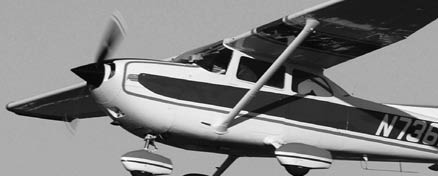
Part I
Takeoffs
It was truly one of the worst flights Ive ever flown. Years have passed and it is still too easy to remember. The pilot had had a flying accident several weeks priorpilot error on takeoff that had cost an airplane and a few scrapes and bruises. The FAA required that he obtain recurrent training to bring his pilot skills back to par before again acting as pilot in command. He called on a Saturday afternoon to ask if I would drive out to the small, rural field and begin the training. Sure, I said.
The runway concerned me the moment I stepped from the car and saw itabout 50/50 Bahia grass and soft, white Florida sand. And short, very short indeed. But the pilots plane was born of short stripsa just-purchased, restored, vintage two-seat tailwheeler of the forties. The little cream-and-yellow ship was one of my favorite models, one in which I had flown many past hours of pleasure. But I had an uneasy feeling.
The departure end of the strip worried me. The runway ended at a grove of rotund, squat orange trees. Draped high above these were the wires of a power line. Yet, I knew full well that two generations of pilots had enjoyed the airport. (And that is very seductive erroneous reasoning.)
We planned the takeoff carefully. Weight and balance, takeoff charted against the summer heat and turf surface, plus a bit extra for the patches of soft sand and the kids at home. Then, a nose-to-aluminum preflight inspection and a full-power run-up, and yet the unease persisted.
After everything checked out, the pilot and I walked to the strips far end and paced off the climb distance we would need and marked our abort point with a notebook page pinned to the turf with a stick. Finally, we manually backed the plane a few extra yards to snug the tail against the runway threshold.
I remember taking a moments pause with one foot on the ground, the other on the spud. The plane was trying to tell me somethingsomething seen by my eye but not yet seen by my mind. But I could not make out its whispered message, lost amid the loud buzz of the afternoon cicadas. I shrugged, went on superalert, and climbed aboard.
We were ready for takeoff.
The pilot pressed in full throttle and a smidge of right rudder to counter the P-factor and the slipstream effect. Normal acceleration brought the tail up right on schedule. The sturdy steel-spring gear smoothed out bumps as we gained momentum behind the singing Continental. We could see the white patch of our abort marker ahead when the little ship traded its earthbound clamor for its airborne life.
But something was wrong!
Even as the wheels cleared, my right hand was sliding toward the yoke. And even as my left hand replaced that of the pilots on the throttle, the planes softly spoken message came through 5 x 5.
We were not climbing.
I again become aware that no pilot alive can resist watching a plane take off. He may pass a motionless airplane without noticing it, but the moment his ears detect the first burst of power from a plane, however distant, he will turn his head regardless of everything else around him and watch it.
Ernest K. Gann
Fate Is the Hunter
Those wires ahead remained virtually motionless across the windscreen. I pinned the nose at best angle of climb speed. The wires started oozing downward, but even so I could see we were not going to clear them. I could not fly beneath them either. Those as-yet-unfruited orange trees prevented that. Neither could I turn away. Not only would the turn cost the meager rate of climb, but my minds eye saw that power line stretching to the horizons curvature. Any attempt to land on the remaining runway would now be disasterI had waited too long.
We threethe pilot, the plane, and myselfflew toward those wires, climbing with all the alacrity of a rusty jackscrew. I was deep into wondering what to do next, adrenaline squirting from both ears, when the wires arrived.
There was only one choice open. At the last moment I hiked the nose upward toward the stall. In the long run that would cost climb, but there was no long run. I hoped for a momentary, pathetic zoom of 4 or 5 feetand got it.
We headed for the municipal airport of long runways and landed to sort things out. The reason for the little ships hazardous takeoff performance was obvious. It had been obvious even as I preflighted, but I had not taken notice. During restoration the wings fabric had been replaced with aluminum. The plane still looked the same, but extra weight and a possible change in airfoil shape drastically altered its takeoff ability. Altered enough, certainly, to make the manufacturers takeoff performance chart pure fiction.
I was reminded once more that takeoff is the most critical phase of flight.

